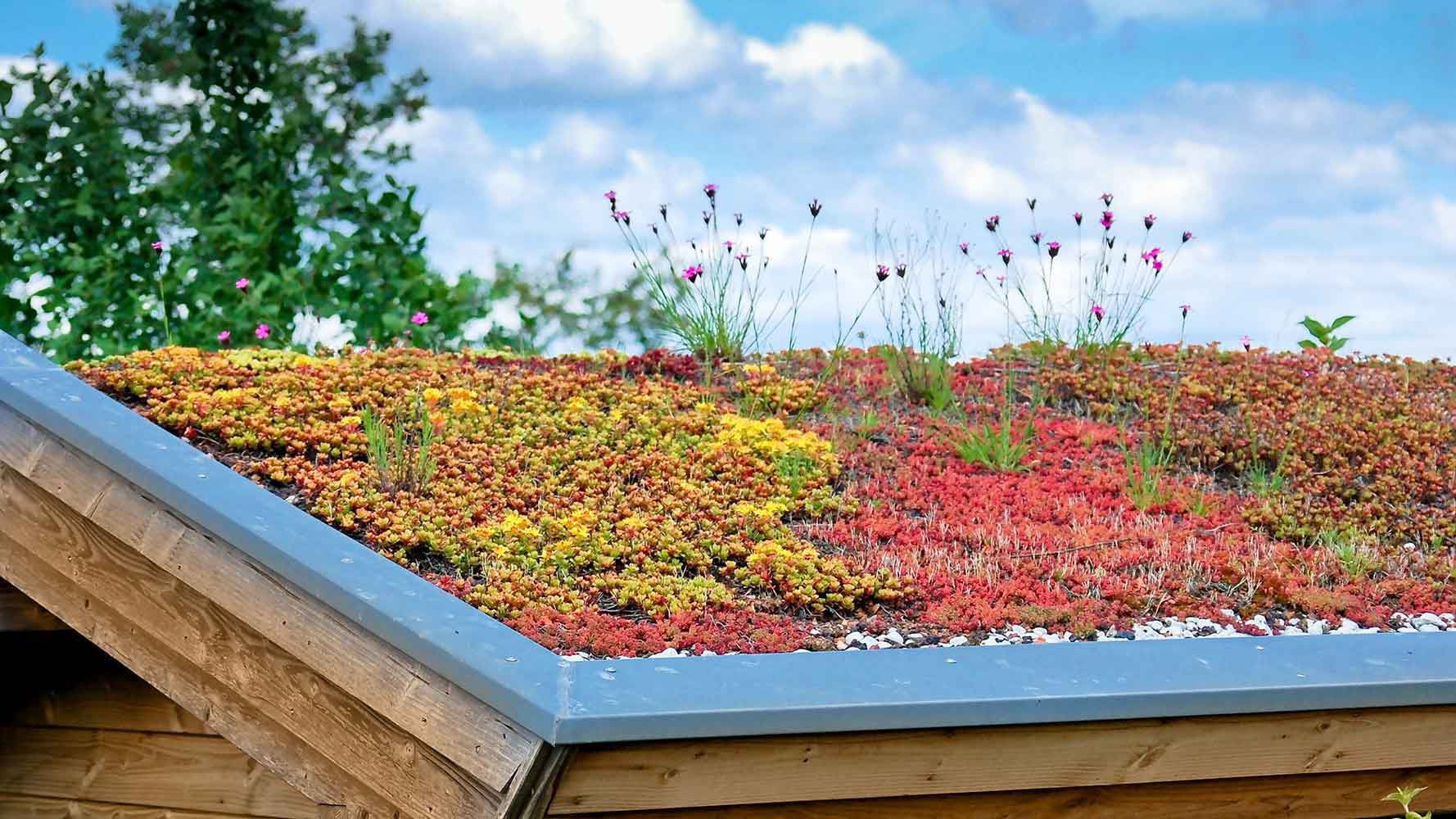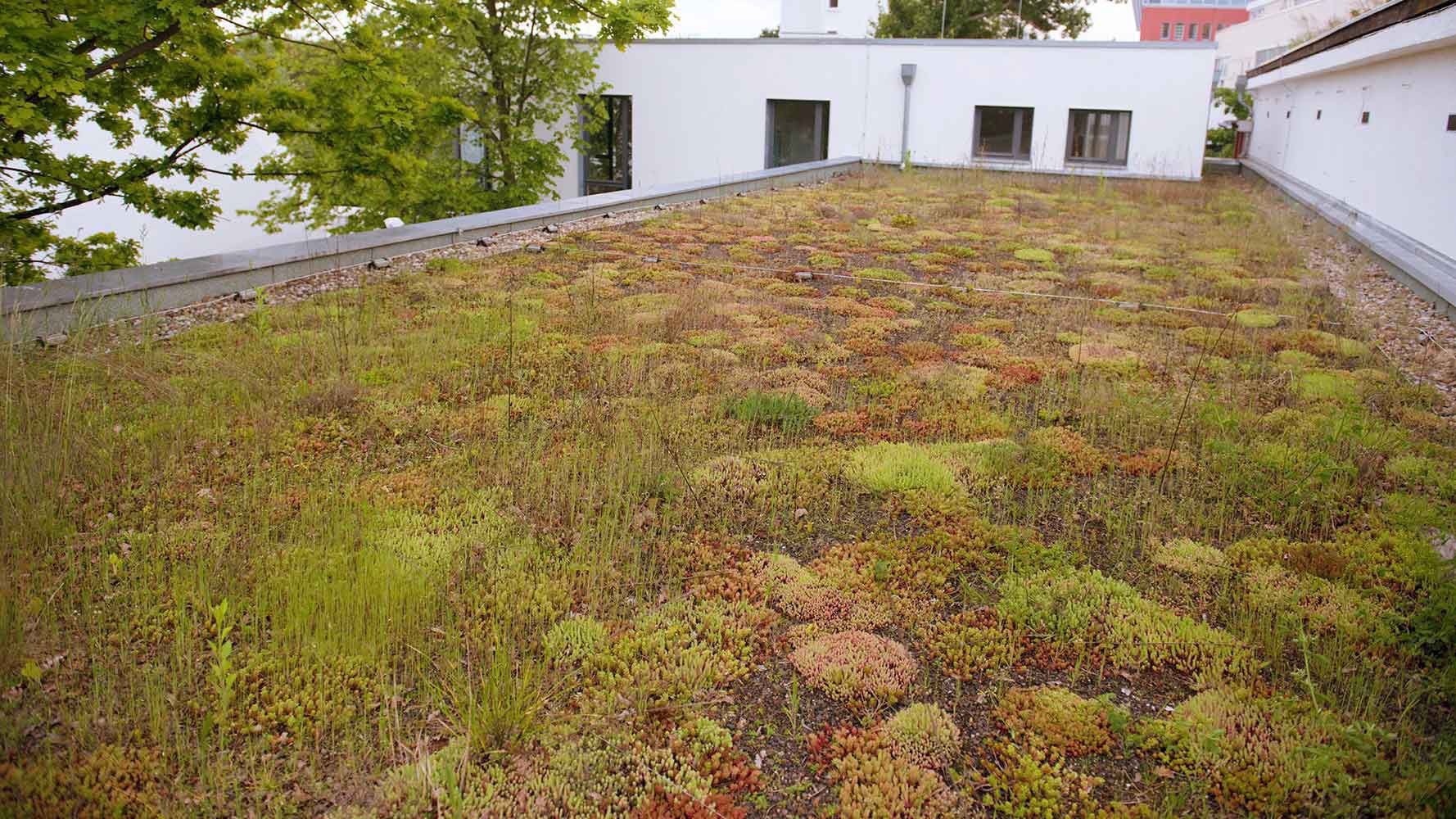Life on and under the roof
Would you like to fill your roof with life? That’s a great idea, as roofs play an important role in promoting nature in cities. Green roofs are the big vision for the cities of tomorrow: cool, calm, and full of life. Much of it has already been a reality in Vienna for decades. But in order to extensively adapt to a changing climate, we must all do our part. So-called extensive, low-maintenance roof greening can especially create large flowered areas and butterfly habitats.
Not only on the roof, but also under it - if made accessible - animals can find refuge: Bat habitations are often found under accessible roofs. If you keep the entrance hole open, you will have lots of little house mates.
Target species
Good to know
- There is a distinction between extensive greening (no watering, rocky grassland or steppe-like grass and herb corridors with a substrate layer of up to 15 centimetres) and intensive greening (watering, at least 20 centimetres of soil structure plus drainage layer, vegetable patches and trees possible).
- Not all types of roofs are equally suited for both types of greening (extensive and intensive) due to their static requirements.
- Extensive roof greenings are especially rich in species and for smaller set-ups on the roofs of garden sheds or carports, they can be easily built via simple means.
- Bats do not cause damage in attics. Their faeces (guano) can be easily removed and used as valuable free fertilizer.
- Roofs without greening get extremely hot in summer and foster the occurrence of heat islands.
What does the City of Vienna do?
The City of Vienna - Environmental Protection department subsidises roof greening up to a maximum of 20,000 euros. You can apply for funding here:
Stadt Wien: Dachbegrünung Förderungsantrag(wien.gv.at)
Are you planning a roof extension? Contact us while you are still in your planning phase! Together, we can find solutions for your flying house mates:
Homepage der Stadt Wien – Umweltschutz (umweltschutz.wien.gv.at)



